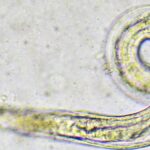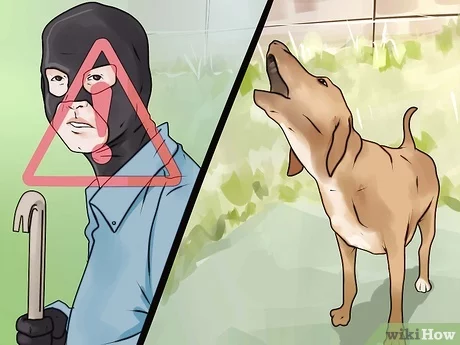How To Treat Interdigital Cysts In Dogs
Interdigital cysts, also known as interdigital furuncles or pododermatitis, are painful and frustrating skin infections that commonly affect dogs. These cysts can occur between the toes or on the paw pads, and often result from bacteria, fungus, foreign objects, allergies, trauma, or a combination of these factors. If left untreated, interdigital cysts can become chronic and lead to severe discomfort, limping, and even secondary infections. However, with proper care and treatment, most interdigital cysts in dogs can be resolved or managed effectively. In this comprehensive guide, we will explore how to treat interdigital cysts in dogs from various angles, including prevention, diagnosis, home remedies, over-the-counter products, prescription medications, surgery, and holistic approaches.
Introduction
Before we dive into the details of treating interdigital cysts in dogs, let’s define what they are and why they matter. Interdigital cysts are basically pus-filled bumps that form between the toes or under the footpads of dogs. They may look like small blisters at first but can quickly grow into painful lumps that ooze blood or fluid. Interdigital cysts in dogs can cause a range of symptoms depending on their severity and location. Some common signs of interdigital cysts in dogs include:
– Limping
– Swelling
– Redness
– Itching
– Pain when touched
– Excessive licking/chewing/biting of paws
– Foul odor
– Discharge
If you notice any of these signs in your dog’s paws or between their toes, it’s important to act promptly to prevent the problem from worsening.
Prevention
As with many health problems in dogs (and humans), prevention is better than cure when it comes to interdigital cysts. While some cases may be unavoidable due to genetic predispositions or environmental factors beyond our control, there are several things you can do to reduce the risk of your dog developing interdigital cysts. Here are some tips for preventing interdigital cysts in dogs:
– Keep your dog’s paws clean and dry: This means wiping their paws with a damp cloth after they come back from walks or playing outside, especially if they have been in muddy or wet areas. You can also use a paw wash solution or pet wipes to clean their paws more thoroughly.
– Trim your dog’s nails regularly: Long nails can put pressure on the paw pads and cause trauma that can lead to interdigital cysts. Make sure you cut your dog’s nails at least once a month, or more often if they grow fast and touch the ground.
– Check for foreign objects: Sometimes, small rocks, sticks, thorns, or other debris can get stuck between your dog’s toes and cause irritation that leads to interdigital cysts. Use a pair of tweezers or forceps to remove anything you see lodged in your dog’s paw pads.
– Avoid allergens: Some dogs may be allergic to certain substances such as pollen, dust mites, grass, or food ingredients that can trigger skin inflammation and infections. Talk to your vet about allergy testing and management options if you suspect that your dog has allergies.
– Maintain a healthy weight: Overweight dogs are more prone to develop interdigital cysts due to the extra pressure on their feet and legs. Make sure your dog is at an optimal body condition score (BCS) based on their breed, age, sex, and activity level.
Diagnosis
If despite your best efforts, your dog develops interdigital cysts anyway, it’s important to take them to the vet for diagnosis and treatment. Your vet will examine your dog’s paws and may perform some tests such as skin scrapings or cultures to determine the underlying cause of the interdigital cysts. Depending on the results, your vet may recommend one or more of the following treatments:
Home remedies
There are several home remedies that you can try to alleviate the symptoms of interdigital cysts in dogs and aid in their healing. However, keep in mind that not all home remedies are safe or effective for all dogs, and some may even worsen the condition. Always consult your vet before using any home remedy, especially if your dog has underlying health issues or is taking medication.
Here are some popular home remedies for interdigital cysts in dogs:
– Epsom salt soak: Dissolve a cup of Epsom salt in warm water and soak your dog’s paws for 5-10 minutes twice a day. Epsom salt can help reduce inflammation, draw out pus, and soothe itching.
– Tea tree oil: Apply a few drops of diluted tea tree oil (1 drop per tablespoon of carrier oil such as coconut oil) to the affected area with a cotton ball or swab. Tea tree oil has natural antiseptic and anti-inflammatory properties that can help fight off bacteria and fungi.
– Apple cider vinegar: Mix equal parts of apple cider vinegar and water in a spray bottle and spray your dog’s paws after cleaning them. Apple cider vinegar can help restore the pH balance of the skin and prevent further infections.
– Aloe vera gel: Apply fresh aloe vera gel (not the commercial kind with added ingredients) to the affected area and let it dry. Aloe vera can help reduce swelling, redness, and pain.
– Colloidal silver: Apply colloidal silver directly to the affected area with a dropper or spray bottle. Colloidal silver is believed to have antimicrobial properties that can kill bacteria without harming healthy cells.
Over-the-counter products
If home remedies don’t work or aren’t suitable for your dog, you may consider using over-the-counter (OTC) products that are specifically designed to treat interdigital cysts in dogs. These products can be found online or at pet supply stores and may include:
– Antiseptic sprays or creams: These products contain ingredients such as chlorhexidine, povidone-iodine, or benzalkonium chloride that can kill bacteria and fungi and prevent further infections.
– Hydrocortisone creams or ointments: These products contain a mild steroid that can reduce inflammation and itching.
– E-collar or booties: These products can help prevent your dog from licking, biting, or scratching their paws while they heal.
Prescription medications
If your dog’s interdigital cysts are severe or recurrent, your vet may prescribe some stronger medications that require a prescription. These medications may include:
– Antibiotics: If the interdigital cysts are caused by bacteria, your vet may prescribe antibiotics such as cephalexin, amoxicillin-clavulanic acid, or enrofloxacin to kill the bacteria and prevent further infections.
– Antifungals: If the interdigital cysts are caused by fungi such as yeast or ringworm, your vet may prescribe antifungal medications such as ketoconazole, itraconazole, or terbinafine to eliminate the fungi and prevent further infections.
– Steroids: If the interdigital cysts are severe or causing significant discomfort, your vet may prescribe systemic steroids such as prednisone or dexamethasone to reduce inflammation and pain. However, steroids should be used with caution as they can have side effects such as increased thirst, appetite, urination, and susceptibility to infections.
Surgery
In some cases, surgery may be necessary to remove large or stubborn interdigital cysts in dogs. This procedure is usually done under general anesthesia and involves making an incision in the skin over the cyst and draining the pus or fluid. The vet may also remove any foreign objects or dead tissue and clean the area thoroughly. After the surgery, your dog may need to wear a bandage or cone of shame to prevent them from licking or biting their paws. Your vet will provide you with instructions on how to care for your dog after the surgery and when to schedule follow-up appointments.
Holistic approaches
If you prefer to use natural or alternative therapies for your dog’s interdigital cysts, there are several holistic approaches that you can consider. However, keep in mind that these approaches may not have scientific evidence to support their efficacy and safety, and some may even be harmful if used improperly. Always consult a qualified holistic veterinarian before using any holistic approach, especially if your dog has underlying health issues or is taking medication.
Here are some popular holistic approaches for interdigital cysts in dogs:
– Acupuncture: This ancient Chinese therapy involves inserting thin needles into specific points on the body to stimulate healing and balance energy flow. Acupuncture may help reduce inflammation, pain, and stress in dogs with interdigital cysts.
– Herbal remedies: Certain herbs such as calendula, chamomile, goldenseal, and yarrow are believed to have anti-inflammatory and antimicrobial properties that can help treat interdigital cysts in dogs. However, herbs should be used under the guidance of a qualified herbalist or veterinarian as they can interact with other medications or cause adverse effects.
– Homeopathy: This system of medicine involves using highly diluted substances that mimic the symptoms of the disease to stimulate the body’s self-healing mechanism. Homeopathy may help relieve itching, swelling, and discharge in dogs with interdigital cysts.
– Diet modification: Some holistic practitioners recommend changing a dog’s diet to eliminate potential allergens or inflammatory ingredients that may contribute to interdigital cysts. A raw diet, grain-free diet, or limited ingredient diet may be suggested based on your dog’s individual needs.
Conclusion
Interdigital cysts in dogs can be a frustrating and painful problem for both pets and their owners. However, with proper care and treatment, most interdigital cysts in dogs can be resolved or managed effectively. By following the tips and advice in this guide, you can help prevent interdigital cysts from developing in your dog, or treat them promptly if they do occur. Remember to always consult your vet before trying any new treatment or remedy, and to monitor your dog’s progress closely. With patience, persistence, and love, you can help your dog overcome interdigital cysts and enjoy a happy, healthy life.



